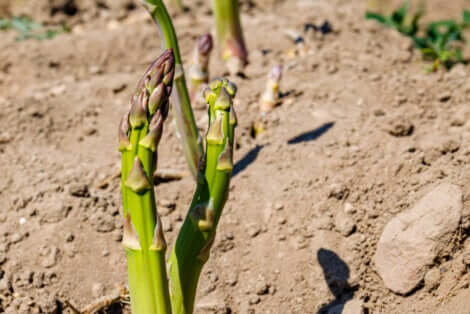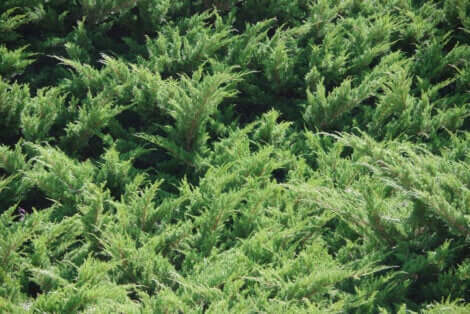Types of Garden Soil and Their Characteristics

When you grow your garden, regardless of the plants you’re going to plant, you need to know the area you’re going to use. Therefore, you should always know the types of garden soil and their characteristics.
This way, you can make sure that it’s the right one for your plant needs. In general, soil contains pulverized rock particles, organic matter, and water as its main components.
However, there are other more specific compounds that we can use to classify them. So, if you want to learn more about this topic, including recommendations to improve your soil, keep reading!
Common types of garden soil
Depending on the area you’re in, the composition of the soil can be very different. In this sense, to classify each type, you need to analyze the amount of organic matter, water, or rock particles.
Clay soil
Clay is a component that stands out for retaining nutrients. Here, the rock particles are very small, so it’s easy to crush and make a ball from this dirt.
In this case, the soil is very fertile but has poor drainage abilities. This means that when you pour water on it, it stays on the surface. As a consequence, the plant doesn’t get the nutrients it needs to grow in optimal conditions.
One of the elements you can add to improve it is compost. This is organic waste fertilizer.
In short, it’s very prone to waterlog and compaction. The technique here is to add organic matter to improve its structure.
These are some of its main advantages:
- Moist and fertile soil
- Can be suitable for most types of plants
However, here are some of its disadvantages:
- Difficult to work with, heavy and even sticky
- It’s cold, so it takes time to warm up during the spring
- Prone to compaction
- Has poor drainage
Sandy soil
This is one of the most common types of garden soil, and it has rocks that are slightly larder than clay soil. A good way to tell it apart is to take a handful and watch the dirt particles slip through your fingers.
Some aspects to highlight about sandy soil is that they are permeable and dry quickly. This makes it necessary to water it frequently.
When you do this, the nutrients tend to disperse. To avoid this, you can add more organic matter and water it very regularly.
Although it’s not as common in crops, it’s possible to grow plants that are resistant to drought. For example, some plants are lawns, succulents, and trees.
These are some of its advantages:
- Good drainage
- Easy to work with almost all times of the year
- Tends to warm up quickly in the spring, which encourages plant growth.
Some of its disadvantages are:
- Prone to drought
- Poor in nutrients, so you need to add more organic matter.
- Often acidic in pH.

Stony soil
This is another type of garden soil. It has stones of different shapes and sizes. However, it doesn’t retain water well, so it’s not the best for agriculture.
This is also called rocky soil. The formations originate through the doubling of the earth’s surface from man-made factors or natural events.
It’s common around the world, but it’s hard to work with when you want to plant a garden. Some of the crops that grow in this soil are yarrow, marigold, and fine lavender.
Its advantages are:
- Ideal for decorative purposes
- Abundant in different parts of the world
- Good water drainage
On the other hand, these are some of its main disadvantages:
- Complicated to grow
- Hard to dig up
- Requires leveling work
Limestone soil
Another type of garden soil that’s quite difficult to work with is limestone. The factor that makes it hard to use is that organic matter tends to decompose quickly.
This means that you need to add lots of organic matter frequently. Also, you nee to be very generous when nourishing and fertilizing this type of soil.
In addition to this, it’s common for plants that grow in limestone soil to have yellowish-looking leaves. If you want to help improve it, you need to add lots of mulch and water it well. Don’t forget to add organic matter with a broad-spectrum fertilizer.
Plants that do well in this garden soil are carnations, clematis, wildflowers, and others that are resistant to drought.
Referring to its main advantages, if the surface layer is deep and contains organic matter, it can be very fertile.
The most obvious disadvantages are:
- It’s alkaline, which makes it unsuitable for acidophilic plants
- If it’s shallow, it’s very draining
- Rapid loss of nutrients
Keep reading: Robust Plants that Don’t Require a Lot of Care
Loam soil
When looking for efficient types of garden soil, you definitely need to think about loam. Some might also know it as loamy soil. It stands out for its nutrient reserves and water availability.
The moment you look at the soil and see that it is dark brown and crumbly, it means that it has organic matter. So, there aren’t a lot of problems with it.
One important detail is that you can find worms in the surface layer. In fact, they dig holes that increase the soil’s structure.
Some of the best advantages are:
- Grow most types of plants without problems
- Retain lots of water and nutrients
- Plants that thrive in this environment require little or no extra materials
However, the main disadvantage is that it’s not good to grow wildflowers, since they need poor soil.
How to improve the types of garden soil
The types of garden soil play a fundamental role on the planet because, through them, food and plants grow. For this reason, over the years, people have made and are making constant efforts to improve their quality.
In this sense, the soil should have certain traits:
- The necessary nutrients for plants to grow without problems
- Support so plants can stand firm
- Good drainage that doesn’t hold too much excess water
- Ensure sufficient air and water for the roots
Then, the ability for plants to grow depends on the quality of the garden soil. So, each farmer needs to improve their soil. To do it efficiently, follow some of the following tips.
Add compost to the soil
Compost is an organic material that slowly releases nutrients into the soil. Through this, the soil stays nourished and gets better every day.
One of the main benefits is that it uses lots of different recycled organic waste. In other words, it’s less expensive.
Ideally, you don’t want to use animal waste since it can cause infections and parasites. Make use of other materials, like pieces of wood, dry leaves, branches, and plant residues.
Use cover plants
A good method to make your soil better quality is to use cover plants. They can provide both food and shade. That way, they cover, protect and feed the area for future harvests.
The first step is to identify the land that needs support and plant these plants to improve fertility. Then, their roots open channels so the soil can get water and oxygen.
One tip is to plant plants from different families to make the process even more effective. In addition, you can divide your space in two. That way, one area grows plants and the other area is improving its fertility.

Add deep-rooted plants
If you don’t want to invest in fertilizers or can’t afford them, it’s a good idea to plant things with deep roots. Through them, it’s easier for nutrients to get in the soil and move to the outside.
You might be interested: How to Plant Different Culinary Plants
Procedures for checking your type of garden soil
Once you know the characteristics, advantages, and disadvantages of the types of garden soil, it’s time to check which one you have.
One of the most common methods is to dig inspection pits at different times of the year and in different areas. With these holes, you can get data on the texture of the soil, the depth of the surface layer, the type of subsoil, and the water content.
Also, you can carry out the touch test. As its name suggests, it consists of taking dirt in your hand and moving your fingers to feel all of its details.
A more advanced option is the sedimentation test. To do this, you need to add a soil sample to a glass container that is taller than it is wide. Make sure to only fill the container halfway. Then, will it to the brim with water. Finally, close it and shake it vigorously.
Leave it on a flat surface and wait a few hours. As that time passes, you’ll see three layers split into different colors. The lowest is sand, the middle one is silt and the top is clay. The very top is organic matter and water.
Overall, knowing your type of soil is key to successful gardening.
All cited sources were thoroughly reviewed by our team to ensure their quality, reliability, currency, and validity. The bibliography of this article was considered reliable and of academic or scientific accuracy.
- Sztern D, Pravia M. Manual para la elaboración de compost: Bases conceptuales y procedimientos. Sidalc.net (1999).
- Russel EJ, Russel EW. Las condiciones del suelo y el desarrollo de las plantas. (1964).
- Hortalizas V, Escolar H. Tipos de suelo. (2015).
- Sánchez J. Fertilidad del suelo y nutrición mineral en plantas – Conceptos básicos. Fertitec S.A (2007).
This text is provided for informational purposes only and does not replace consultation with a professional. If in doubt, consult your specialist.








